Introduction
What Sound Do A Cat Make: In the realm of animal communication, few creatures possess the ability to convey emotions and intentions through vocalizations as intriguingly as cats. Cats, both domestic and wild, have a repertoire of sounds that span from the soothing purr to the attention-grabbing meow, and even the enigmatic yowl. These vocalizations serve as windows into the complex world of feline communication, revealing their moods, needs, and interactions with both their human companions and fellow animals.
From the softest purr of contentment to the most urgent yowl of distress, the sounds that cats produce are as diverse as the situations that evoke them. Understanding the meaning behind these cat string offers insight into the feline psyche and enhances the unique bond that humans share with these captivating creatures. In this exploration, we will unravel the fascinating symphony of sounds that cats create and delve into the reasons behind their various vocal expressions. So, let’s embark on a journey to decode the language of cats and discover the nuanced messages they convey through their melodic voices.
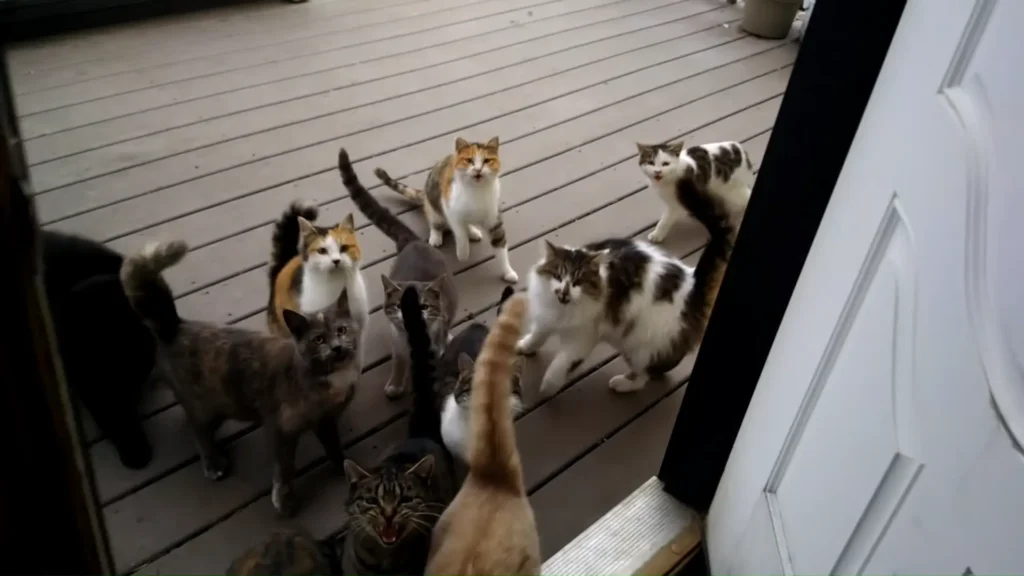
What are the 5 sounds cats make?
Here are 5 of the most common cat noises and what they mean:
- #1 – Meowing. Everyone is familiar with cat meows.
- #2 – Purring.
- #3 – Hissing.
- #4 – Growling or Snarling.
- #5 – Yowling.
Learn to Listen to Your Cat.
Purring: The Contentment Vibration
Purring is perhaps the most recognizable and soothing sound a cat makes. It’s often associated with a content and relaxed feline. While most people assume purring is a sign of happiness, it can also indicate other emotions, such as pain relief, self-healing, or even a desire for attention. Cats may purr when they’re being petted, cuddled, or even during moments of solitude. Purring is produced by rapid contractions of the cat’s laryngeal muscles and can range in intensity and pitch.
Meowing: Conversing with Humans
Meowing is a cat’s way of communicating with humans. Interestingly, cats generally don’t use meowing to communicate with each other—they prefer other forms of body language, scent marking, and vocalizations. Kittens meow to get their mother’s attention, but as cats grow older, they tend to reserve meowing for human interaction. Different meow patterns and frequencies can indicate various needs, such as hunger, attention, or simply wanting to initiate a conversation.
Hissing: A Warning Signal
Hissing is a defensive sound that cats make when they feel threatened, cornered, or frightened. This sound is often accompanied by a distinctive body posture: an arched back, fluffed fur, and a hissing cat ready to defend itself. Hissing is a cat’s way of saying, “Back off!” It’s a signal to both potential aggressors and other cats that they should keep their distance.
Growling: The Aggressive Tone
Similar to hissing, growling is an aggressive vocalization that cats use to communicate their displeasure. While hissing usually accompanies a cat’s warning to stay away, growling signifies a deeper level of aggression. This sound may occur during territorial disputes or conflicts with other animals. It’s also possible for a cat to growl when experiencing pain or extreme discomfort.
Chirping and Chattering: The Hunter’s Melody
Chirping and chattering are unique sounds that often occur when a cat spots a bird or small prey animal. This vocalization is believed to mimic the sounds made by birds and rodents, potentially indicating a cat’s excitement or frustration at not being able to catch the target. Some experts theorize that chirping and chattering could be a manifestation of a cat’s hunting instincts, possibly an instinctive way to practice for real-life hunting situations.
How do cats sound in English?
Cats: meow
When they’re content (happy)—like when you pet them—they purr. Cat purring sounds like a little engine! Unhappy cats might yowl, or cry out loudly. Or they might hiss, which is also the sound a snake makes.
Meowing: The Universal Cat Sound
Meowing is perhaps the most recognizable and versatile sound cats make in English. Cats meow to get the attention of their human companions, often using different patterns, frequencies, and volumes to convey specific messages. A short, sharp meow might indicate excitement or anticipation, while a longer, plaintive meow might suggest a desire for food or companionship. Kittens use meows to communicate with their mothers, and adult cats use them to engage with humans.
Purring: A Purrfect Expression of Contentment
Purring is a soothing and gentle sound that emanates from a content cat. It’s often associated with relaxation, comfort, and happiness. Cats purr not only when they’re being petted or cuddled but also when they’re at ease in their surroundings. However, purring can also occur when a cat is in pain or distress, as it is thought to have healing properties due to its vibration.
Hissing: The Warning Sibilance
Hissing is a distinctive sound that cats use when they feel threatened or cornered. It’s an aggressive vocalization accompanied by specific body language: arched back, fluffed fur, and bared teeth. In English, hissing is a clear warning sign to stay away, and it’s directed towards both potential aggressors and fellow cats. It serves as a means of self-defense, conveying the message, “Back off!”
Growling: Unveiling Aggression
Growling is another aggressive sound that cats make in English. It’s a low and rumbling vocalization often heard during territorial disputes or confrontations with other animals. Cats may also growl when they’re in pain or experiencing extreme discomfort. In such instances, the sound is a clear indicator of the cat’s unease or displeasure.
Chirping and Chattering: The Huntress’s Melody
Chirping and chattering are unique vocalizations that many cats produce when they spot birds or other small prey animals. In English, these sounds might resemble a mix of short, high-pitched chirps and rapid clicking noises. These vocalizations are believed to be an expression of excitement and frustration at not being able to reach the target. Some experts suggest that chirping and chattering could be instinctual hunting behaviors, mimicking the sounds of potential prey.
How do you write cat sounds?
Sometimes, these are written differently to more accurately describe a sound or to illustrate some variation in meaning. Cats can also miaow, mrruh, prrrup, mrow, yowl, or mrrrrrr. That’s the beauty of onomatopoeia—you can adjust the word to the exact sound you need.
Meowing: Translating the Universal Cat Language
Meowing, the quintessential sound of cats, is often depicted in writing as “meow.” This simple representation encapsulates the multifaceted nature of meowing, which can range from soft and gentle to sharp and insistent. Writers use “meow” to evoke the communication between cats and humans, capturing the attention-seeking, affectionate, or even demanding qualities of this universal feline sound.
Purring: Conveying Contentment in Letters
The comforting and soothing sound of a cat’s purr is portrayed in writing as “purr.” This onomatopoeic representation encapsulates the gentle vibrations that resonate from a contented cat. When used in text, “purr” allows readers to envision the calming presence of a cat, radiating a sense of peace and warmth.
Hissing: Warning Signals on Paper
The sharp and distinct sound of a cat’s hiss can be effectively captured in writing as “hiss.” This onomatopoeia mirrors the forceful expulsion of air that accompanies a cat’s defensive response. When used in narratives, “hiss” carries a sense of caution and danger, helping readers visualize the cat’s protective stance and its intent to ward off potential threats.
Growling: Conveying Intensity through Letters
When a cat growls, its vocalization can be portrayed in writing as “growl.” This onomatopoeic representation echoes the low and rumbling sound that emanates from an agitated or aggressive cat. In text, “growl” adds depth to a scene by conveying tension and unease, allowing readers to imagine the fierce and protective demeanor of the cat.
Chirping and Chattering: Eliciting Huntress Vibes
To capture the intriguing sounds of a cat’s chirping and chattering, writers can use onomatopoeia such as “chirp” and “chatter.” These representations evoke the quick, high-pitched noises that a cat might make while observing prey. In written form, these onomatopoeias bring a playful and inquisitive energy to the narrative, inviting readers to envision the cat’s inner hunting instincts.
How many sounds are in cat?
One of the most surprising cat facts is that cats can actually make almost 100 different sounds. From the peeps of kittens to the meows of adults, cats have a wide range of vocalizations. Kittens typically meow to their mother for milk, but most adult cats are only known to meow in the presence of humans.
Meowing: The Versatile Vocalization
The meow is undeniably one of the most recognized sounds in the feline repertoire. However, it’s important to note that meows come in various pitches, lengths, and intensities. A short, high-pitched meow might indicate excitement or greeting, while a long and plaintive meow could signify a desire for attention or food. Additionally, kittens and adult cats might use different meow patterns to communicate various needs.
Purring: The Melodic Expression of Contentment
Purring is another well-known sound that cats produce, and it’s often associated with contentment and relaxation. However, even within purring, there is diversity. Cats can vary the intensity, rhythm, and frequency of their purrs, creating nuanced variations that reflect their emotional state. While purring is commonly linked to happiness, it can also emerge when a cat is in pain or seeking solace.
Hissing: The Defensive Warning
Hissing is a unique vocalization reserved for moments of threat or agitation. Cats emit a hissing sound when they feel cornered, frightened, or confronted. This sound, coupled with specific body language, serves as a clear warning to stay away. While the hiss itself might seem uniform, its context and accompanying behaviors offer insight into the cat’s level of distress.
Growling: Expressing Agitation
Similar to hissing, growling is a vocalization that conveys discomfort or aggression. The low, rumbling sound of a growl can be accompanied by a bristled appearance and bared teeth. This combination signals a heightened level of irritation, often arising in situations of conflict, territorial disputes, or physical discomfort.
Chirping and Chattering: The Playful Symphony
Chirping and chattering are more specialized sounds that cats employ when observing potential prey, such as birds or small animals. These unique vocalizations consist of a series of short, high-pitched chirps or clicking noises. While not as common as meows or purrs, these sounds reveal a playful and curious side of cats, possibly reflecting their innate hunting instincts.
Trilling: The Friendly Greeting
Trilling is a delightful sound that falls between a meow and a purr. It’s often used as a friendly greeting or an expression of excitement when cats interact with their human companions or fellow felines. Trills can vary in length and intensity, offering a cheerful and sociable dimension to the cat’s vocal repertoire.
What are cats Favourite sounds?
Most cats like to hear these sounds. Sometimes, you cat may tilt their head or twitch ears when hearing them. Some of these sounds are ducks toys squeaking, door bell, rats noise, trills, and cat-specific music. Let your cat enjoy these sounds.
Bird Chirping: A Hunter’s Melody
The gentle chirping of birds is a sound that seems to universally pique a cat’s interest. Cats are natural hunters, and the twittering of birds can trigger their innate predatory instincts. The high-pitched and rhythmic nature of bird chirping can elicit excitement and curiosity in cats, often leading to alert postures and attentive gazes directed toward the source of the sound.
Rustling Leaves: A Whisker-Twitching Delight
The sound of leaves rustling in the wind or underfoot is another favorite among cats. This soft, subtle sound simulates the movement of small prey animals or insects, making it irresistible to a cat’s keen senses. Many cats will immediately perk up and become more alert when they hear the delicate rustling of leaves, as if anticipating the possibility of a hidden playmate or a potential target.
String or Feather Toys: An Invitation to Play
Cats have a fascination with the rustling and swishing sounds that string or feather toys create. The crackling noise of feathers brushing against each other or the subtle friction of a string being pulled through the air mimics the sounds of their prey moving. This sound combination is like music to a cat’s ears, instantly triggering their playful instincts and enticing them to engage in a joyful game of “hunt and pounce.”
Crinkling Paper: A Curiosity Aroused
The crinkling sound of paper or plastic can awaken a cat’s curiosity and prompt them to investigate the source of the noise. Many cats find the crinkling sound intriguing and associate it with potential hidden treasures or treats. Whether it’s the sound of a paper bag being crumpled or a toy being squeezed, the crinkling noise often sparks a cat’s interest and prompts them to explore.
Human Voice: The Call of Companionship
Although not a naturally occurring sound in a cat’s environment, the human voice—particularly the gentle and soothing tones of their human caregivers—can be a favorite auditory experience for cats. Cats often develop strong bonds with their owners and respond positively to the familiar sound of their voice. A calm, affectionate tone can reassure cats, making them feel safe, loved, and connected.
Do cats have a voice?
Next to birds, cats possess the widest range of vocalizations of any domestic pet – in fact, cats can make over 100 distinct sounds! These fall into a variety of nuanced communications such as purring, chirping or trills, chattering, growling, hissing, and of course, meowing.
Vocalizations Beyond Words
While cats may not use words like humans do, they certainly have a “voice” in the sense that they possess a variety of sounds that carry distinct meanings. These vocalizations, ranging from the well-known meows and purrs to hisses, growls, chirps, and trills, form a complex feline language. Each sound carries a unique message that can convey anything from affection and contentment to warning signals and territorial assertions.
Meowing: The Universal Form of Communication
Meowing is perhaps the most recognized form of feline communication. Interestingly, cats primarily use meowing to communicate with humans rather than with other cats. The pitch, tone, and intensity of a meow can express a range of emotions, from simple greetings to requests for attention, food, or even a door to be opened. Kittens meow to their mothers, while adult cats meow to engage human interaction.
Purring: Expressing Comfort and Contentment
Purring is another essential form of feline vocalization that often signifies contentment and relaxation. It’s a unique sound produced by the rapid movement of the muscles within a cat’s larynx. While purring is typically associated with pleasure and comfort, cats may also purr when they are in pain or distress, suggesting that this sound serves a broader emotional purpose.
Hissing and Growling: Defending and Warning
Hissing and growling are vocalizations cats use when they feel threatened or agitated. These sounds, often accompanied by specific body postures, serve as defensive warnings to communicate a clear message: “Back off!” Hissing and growling are part of a cat’s arsenal for establishing boundaries and protecting themselves from potential danger or confrontation.
Chirping and Chattering: The Huntress’s Song
Chirping and chattering are unique vocalizations that cats employ when they spot prey, such as birds or insects. These sounds, often paired with excited body language, might be an expression of frustration at not being able to physically capture their target. These vocalizations are believed to mimic the sounds of prey and may serve as a way for cats to practice hunting techniques.
Trilling: A Friendly Greeting
Trilling is a cheerful, melodic sound that cats often use as a friendly greeting to their human companions or other cats. It’s a unique blend of meowing and purring, conveying excitement and sociability. Trilling can be seen as an expression of happiness and a way to initiate interaction.
Why do cats meow?
The cat’s meow is her way of communicating with people. Cats meow for many reasons—to say hello, to ask for things, and to tell us when something’s wrong. Meowing is an interesting vocalization in that adult cats don’t actually meow at each other, just at people.
Communication with Humans: A Special Connection
Cats are known to meow primarily as a way of communicating with humans. Unlike other forms of feline communication that are directed towards other cats, meowing seems to be a uniquely human-directed behavior. Cats recognize that their human caregivers respond to their vocalizations, so they use meows to express their desires and needs, whether it’s for attention, affection, or something more specific.
Expressing Needs: Pleas for Attention and Care
One of the most common reasons behind a cat’s meowing is to convey their needs and desires. Cats might meow to let their owners know that they’re hungry and it’s mealtime. The frequency, intensity, and tone of the meow can communicate varying levels of urgency, from gentle reminders to insistent pleas. By meowing, cats express their expectation of being provided with food, water, or even playtime.
Seeking Attention: Longing for Interaction
Cats are social creatures, and meowing can be a way for them to seek attention and interaction from their human companions. A cat might meow simply to initiate play or to engage in social bonding activities. Responding to a cat’s meowing with positive interactions can reinforce their behavior and strengthen the human-animal bond.
Is cat Short a sound?
The short vowel sound for A can be found in words like apple, attitude, cat, actually, and can. Elephant begins with the short vowel sound of E.
Origins of the Word: Etymology Unveiled
The word “cat” can be traced back to Old English, where it was spelled as “catt.” This Old English term had its roots in other Germanic languages, such as Old High German “kazza” and Middle Dutch “katte.” The origin of the word itself seems to be uncertain, as it is thought to have Indo-European roots that predate written records.
No Direct Connection to a Sound: A Linguistic Term
Unlike some onomatopoeic words that attempt to replicate the sound they represent, such as “meow” for the sound a cat makes, the word “cat” does not directly mimic the sound of a feline. Instead, it is a linguistic term that has been handed down through generations as a means of identifying and referring to this particular animal. It’s important to note that while “cat” doesn’t resemble a cat’s vocalization, the language used by humans to imitate the sound a cat makes—such as “meow” or “mew”—is quite distinct.
Evolution of Meaning: From Mouser to Pet
Throughout history, cats have held diverse roles in different societies. In ancient civilizations, such as Egypt, cats were revered and even worshiped for their mysterious and independent nature. In medieval Europe, they were admired for their hunting abilities and were valued for their role in controlling rodent populations. Over time, cats transitioned from being primarily working animals to beloved pets, forming deep connections with humans.
Symbolism and Literature: Cats in Culture
Cats have held symbolic and cultural significance in various societies. In many cultures, they are associated with mystery, independence, and magic. Cats have also made their way into literature and folklore, often embodying traits that range from cunning and curiosity to companionship and comfort.
Contemporary Usage: A Household Term
Today, the word “cat sound” is widely recognized and used across the globe to refer to our furry companions. It’s a term that effortlessly bridges languages and cultures, signifying a creature that has become an integral part of human lives. Whether as a symbol of independence, a loyal companion, or simply an adorable pet, the word “cat” encapsulates the essence of these enigmatic animals.
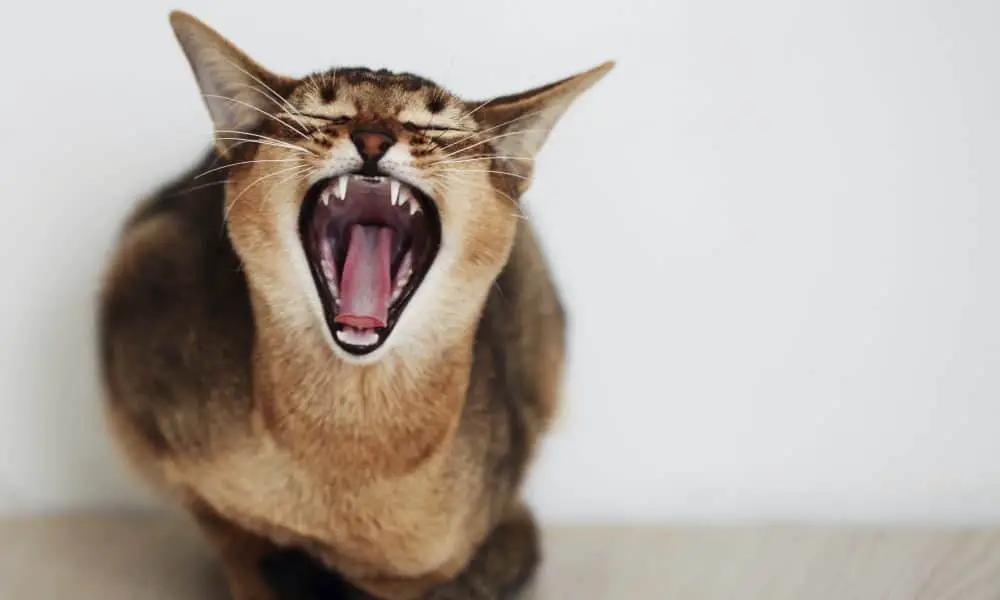
Conclusion
In the intricate tapestry of nature’s communication, the sounds that cats make form a captivating and essential thread. From the gentle purring that signifies comfort and connection to the sharp meowing that calls for attention, cats have mastered the art of expressing their emotions and needs through their vocalizations. As we’ve explored the spectrum of sounds cats produce – from the curious chirping to the powerful yowling – we’ve gained a deeper understanding of their world.
Cats’ vocalizations are not just random noises; they are a rich language that bridges the gap between humans and these enigmatic creatures. Through patient observation and attentive listening, we can decipher the messages embedded within their meows, purrs, and hisses. This understanding fosters stronger bonds between us and our feline companions, enabling us to respond more effectively to their desires and emotions.
As we marvel at the versatility of the sounds cats make, let’s remember that these vocalizations are part of a greater symphony of their lives. Cats use their voices to navigate their relationships, communicate their states of mind, and express their intrinsic nature. By embracing and respecting their unique forms of expression, we open doors to a realm of companionship that goes beyond the boundaries of language. So, the next time you hear your cat speak, take a moment to listen – for in their sounds, you’ll discover a world of emotions, intentions, and the beauty of their silent conversations with us.

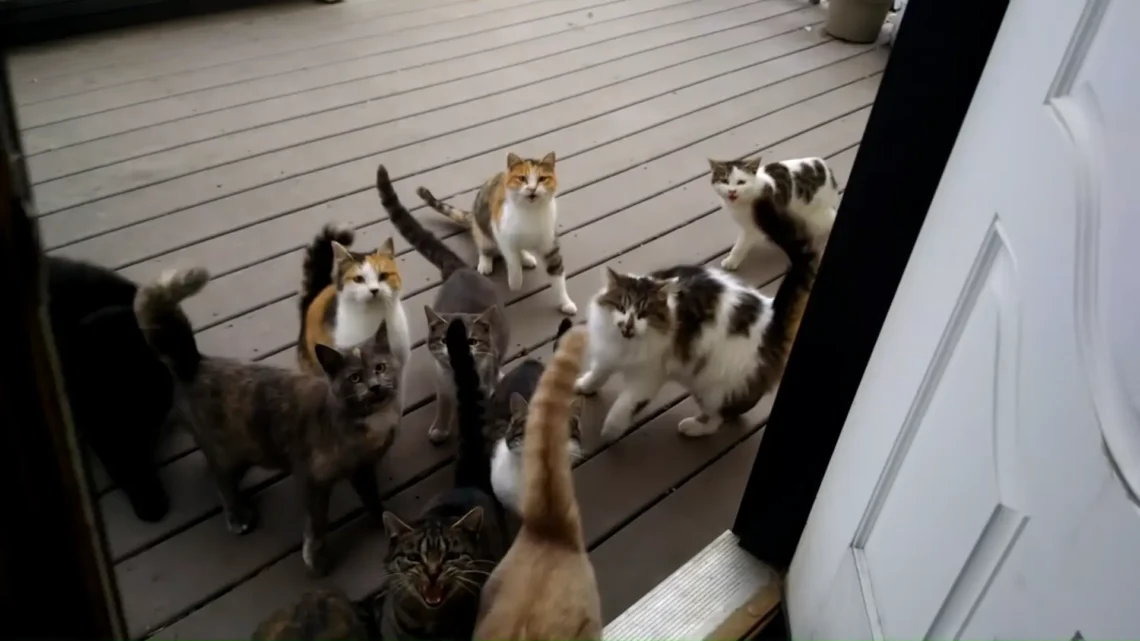
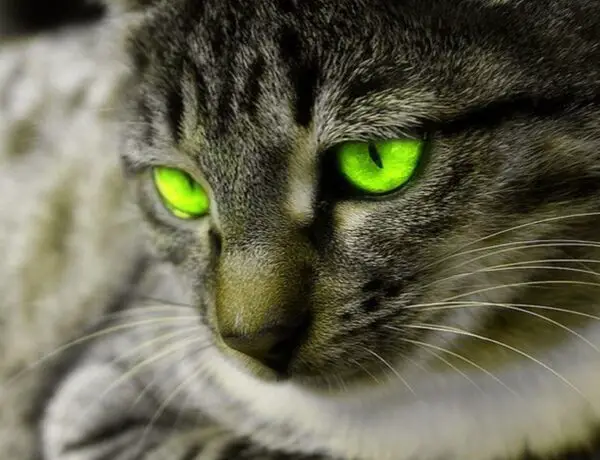
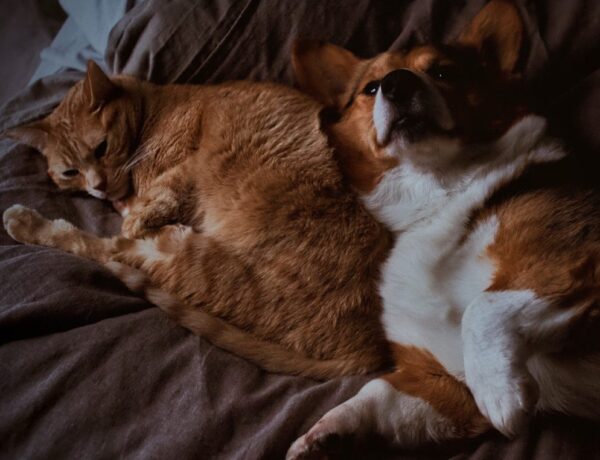

No Comments